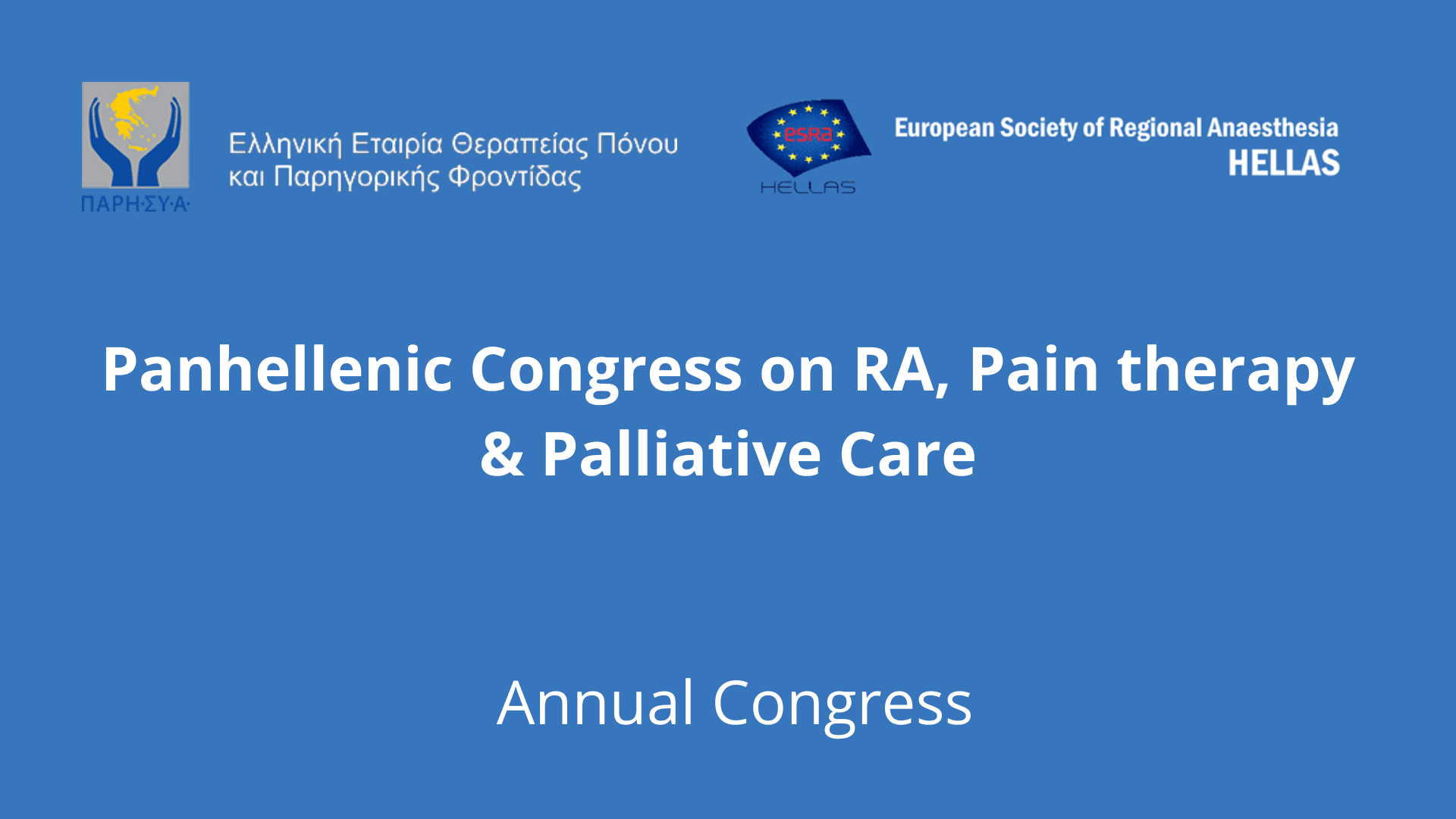SPINAL DELIVERY SYSTEMS FOR CANCER PATIENTS

ESRA Highlights
24th Annual ESRA Congress
September 14 – 17, 2005, Berlin, Germany
Congress Highlights
SPINAL DELIVERY SYSTEMS IN CANCER PATIENTS
Athina Vadalouca
Pain Relief and Palliative Care Centre
University of Athens, Greece
For Full Text in pdf form click here.
… “Pain is a Disease in Its Own Right” EFIC Declaration, 2001
The ongoing worldwide debate regarding assisted suicide has raised physician and public awareness about the problem of intractable pain in cancer patients [1]. The main reasons for the failure to achieve control of pain are inexperience and lack of knowledge of the simple principles of effective analgesic use and in many countries the non – availability of strong opioid analgesics [2]. Most of us accept that orally administered opioids are the best route because of the simplicity and cost effectiveness. Patients with cancer pain receiving orally opioids and adjuvant drugs may experience adequate pain control ίn 80-90% of cases. Ιn the rest 10-20% of the cases some form of invasive therapies will be needed.
Ever since the application in 1980 of morphine for spinal analgesia ίn patients with refractory cancer pain, spinal infusion therapy has become one of the cornerstones for the management of chronic intractable pain.
In the last two decades the introduction and development of drug delivery systems has created new ways to treat intractable cancer pain. The brief review of pain medication delivery, definitely showing that the method is helpful in cancer pain, although the rare complication of mass formation of the catheter tip [3].
Before we decide to implant a system in order to have a better outcome exclusion evidence must be considered.
Exclusion Criteria
Αbsolute
Aplastic anaemia
Systemic infection
Known allergies to the material
Known allergies to the intended medication
Active intravenous drug abuse
Psychosis / Dementia
Relative
Receiving ongoing anticoagulation therapy
Child before fusion of the epiphysis
Recovering drug addict
Opioid nοn responsivity
Lack of social /family support
Socio-economic problems
Many factors determine the clinical efficacy of the spinal opioid delivery systems. These include:
- Patient Selection
- Characteristics of the delivery system used
- Route Selection
- Drug Selection
- Cost of the system used
- Complications
In terms of patient selection we need to consider [2]:
- Life Expectancy
- Ρain Origin and Mechanism
- Spinal Canal Assessment
- Unmanageable Side-effects with Oral Opioids
- Patient’s Environment
Ιn terms of the characteristics of the delivery system used we need to classify:
- Percutaneous Catheters
- Subcutaneous surgically-implanted catheter for drug administration via an external PCA pump
- Surgically-implanted catheters with subcutaneous port
- Surgically-implanted catheter with implanted infusion pump at a fixed rate
- Surgically-implanted catheter with implanted programmable infusion pump
Last year a new device was introduced by Medronic: The PCA in intrathecal therapy for chronic pain.
There are many advantages and disadvantages of the intraspinal devices depending on the type of the device. Before the implantation of the delivery system it is important to perform an appropriate trial in order to know if the administration of opioids has side effects or if the patient demonstrates pain relief [5].
Regarding route selection the decision should be inpidualized to patient’s circumstances. Comparative studies have shown that the intrathecal administration of morphine may give more satisfactory pain relief with lower doses of morphine and fewer side effects than epidural administration. However, the epidural administration reduces the risk of neurotoxity. Hassenbusch et al suggested the intrathecal infusion with a daily opioid dose as low as possible in order to reduce the incidents οf catheter-tip inflammatory masses [6]. Ιn terms of drug selection, consensus guidelines were developed by an expert paneI [7]. The panel’s review suggested that the mainstay drug for long term intrathecal infusion has been morphine that should be considered the first line strategy for most patients. From a comparison of intrathecal Drug Therapy (IDT) with Conventional Ρain Therapy (CPT) in patients suffering from chronic pain it was shown that lDT is cost- effective in the long-term despite high initial costs of implantable devices [8].
Finally, before considering the use of invasive devices we must be fully aware of all the potential complications of the procedure, the device and the drugs used. As a conclusion we can say that the intraspinal techniques available to treat intractable pain have significantly enhanced our ability to relief suffering.
But as anaesthesiologists involved in homecare of patients with implanted devices such as morphine pumps and epidural injections or PCA should be aware of potential complications that may have severe outcomes because frequency and payments of claims associated with chronic pain management by anaesthesiologists, increased in the 1990’s.
References
- Hassenbusch JS et al. Clinical Realities and Economic Considerations: Economics of Intathecal Therapy. J Pain Symptom Management, 1997; 14 (3): 36 – 48.
- Vadalouca A. Cancer Pain Relief by PCA Pump Infusion. Management of Pain. A world Perspective II. International Proceedings pision, Monduzzi Editore, 1996, pages 338 – 345.
- Penn RD. Intrathecal Pain Medication Delivery. Neurosurg Clin North Am, 2003; 4 (3): 381 – 382.
- Maeyaert J et al. PCA, an Intrathecal Therapy for Chronic Pain: Safety and Effective Operation of the Model 8831 Personal Therapy Manager with a Pre – Implanted Synchro Med Infusion System. Neuromodulation, 2003; 6 (3): 133 – 141.
- Panchal JS et al. Intrathecal Pumps. Techniques in Regional Anaesthesia and Pain Management, 2000; 2 (3): 137 – 142.
- Hassenbusch JS et al. Management of Intrathecal Catheter – Tip Inflammatory Masses: A Consensus Statement. Pain Medicine, 2002; 3 (4): 313 – 323.
- Bennet G et al. Clinical Guidelines for Intraspinal Infusion. Journal Pain Symptom Management, 2000; 20 (2): 38 – 42.
- Kumar K et al. Treatment of Chronic Pain by Using Intrathecal Drug Therapy Compared with Conventional Pain Therapies: Cost – Effectiveness Analysis. J Neurosurg, 2002; 97: 803 – 810.






